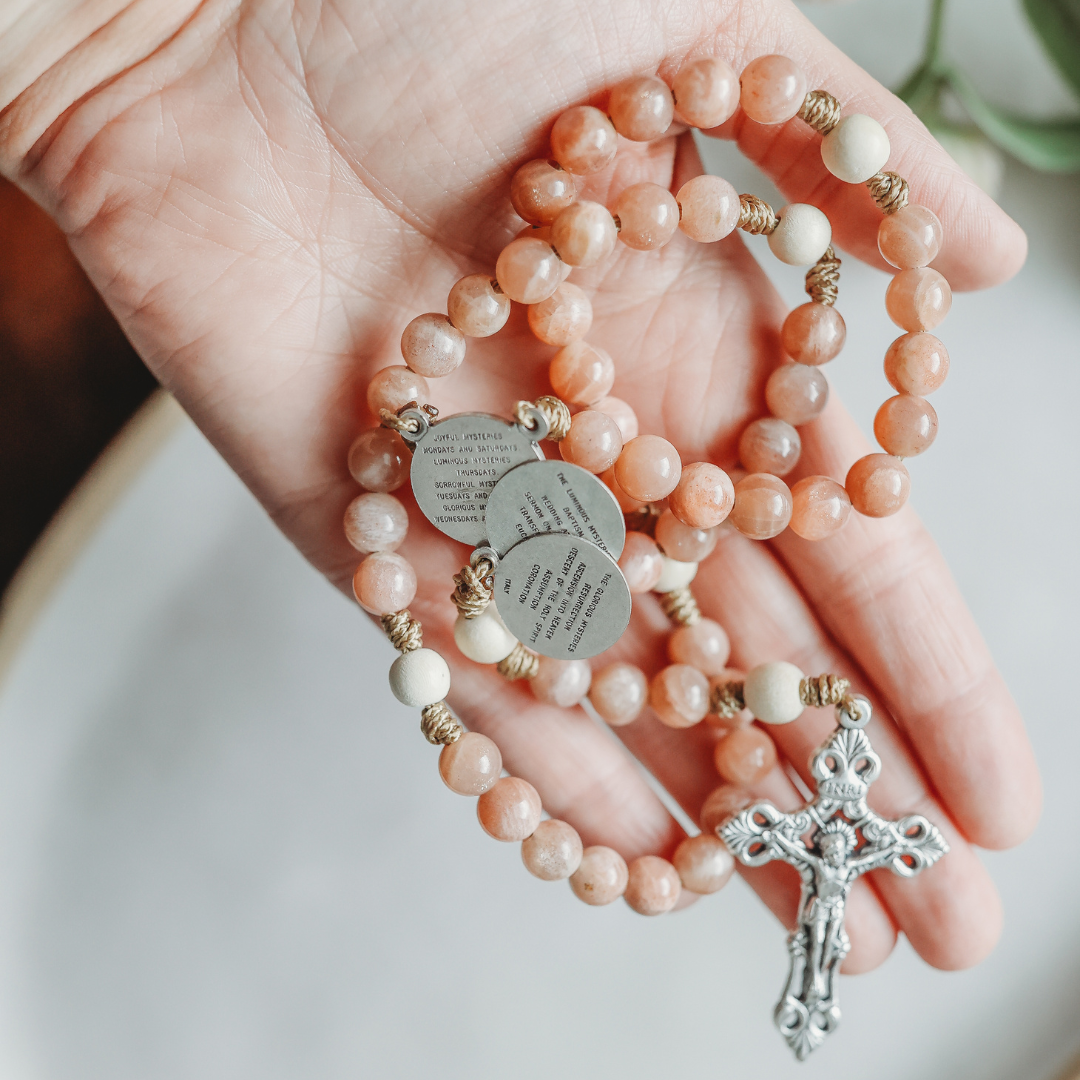By Mariah Mulderink
What is St. Joseph’s Table?
St. Joseph’s Table is a special way of celebrating the Feast of St. Joseph (March 19th) that dates back to the Middle Ages. It involves a lot of bread, a very large table, and a joyous celebration.
How Did St. Joseph’s Table Start?
The legend goes that sometime in the Middle Ages there was a drought in Sicily, Italy. As Sicilians watched their crops and animals die, they began to pray for the intercession of St. Joseph. Finally, the rain fell! The people of Sicily were overjoyed and celebrated with a feast. Part of this feast included setting a grand table with many special foods. Something really beautiful about this feast was that it was shared with the less fortunate. Not only did the Sicilians celebrate, but they also went and shared their food with others, especially the poor.
After that, each year the feast was held. Typically, a wealthier family would put together the celebration and then share it with those less fortunate. The tradition has continued on since and has made its way into several other European countries and also the United States.
St. Joseph’s Table was originally celebrated in homes and still can be. However, over the years, the celebration began to take place at churches or community centers. It is a celebration that can really bring the community together.

What Is the Purpose of St. Joseph’s Table?
“The heart of this tradition can be found in these three aspects:
- Veneration--special recognition of St. Joseph during Mass and at the ‘table.’
- The Table--both a kind of ‘altar of reverence’, and a communal celebration.
- The Poor--The intention of all the gifts is to help those in need.” (https://yearofstjoseph.org/devotions/st-joseph-table/)
These three aspects are beautiful reasons to take part in the St. Joseph Table tradition. In this year of St. Joseph, it is especially good to really celebrate his feast day on March 19th. However, such an incredible saint ought to be celebrated and honored in a big way every year. Someone who gave of his life so purely and wholly warrants an incredible celebration. He deserves to be honored and St. Joseph’s Table is a great way to do this.
The Parts of St. Joseph Table
The first and most important part of St. Joseph’s Table is Mass. It is at Mass that the most important celebration takes place. So, be sure to try and include Mass in your day on March 19th. In some parishes, it is a tradition to have “St. Joseph, Mary and the child Jesus bring up the gifts; parishioners dressed as the Holy Family emphasize the stewardship of St. Joseph’s gifts to the Church” (https://yearofstjoseph.org/devotions/st-joseph-table/). There may also be a procession after Mass in honor of St. Joseph.

Now, to the table itself. Don’t be intimidated, but this is quite an impressive deal. The table is usually a three-tiered display. Most are covered in a white table cloth. “The three tiers represent the Holy Trinity and the ascent from earth to Heaven” (https://yearofstjoseph.org/devotions/st-joseph-table/). Place a statue of St. Joseph at the very top. Once you have your tables set up and the white tablecloth over top, add some flowers and candles. Lilies would be very appropriate as St. Joseph is typically depicted carrying lilies. Candles in green, brown, and yellow votives are typically used to represent the colors in which St. Joseph is typically seen dressed in art. Along with the candles and flowers, you could also put wine on the table to symbolize the feast at the wedding at Cana. A very important element of the table will be a variety of different breads and pastries, some of which are particular to this tradition. Other symbolic aspects of the table could be pineapple for hospitality as well as other fruits. The final touch of the main table is a basket for attendees to place prayer intentions.
In front of the main table, you might set up a smaller table where the “Holy Family” will be seated. At many St. Joseph’s Table celebrations, there will be three individuals who represent St. Joseph, Mary, and the Child Jesus. Those individuals will eat at this table.
This may all sound very overwhelming, but you are definitely permitted to do a simpler version at home. Wherever your St. Joseph’s Table takes place, aim for reverence and festivity.
The Food at St. Joseph’s Table
The most well-known food at St. Joseph’s Table is the bread, specifically sesame-coated breads which are typically made in special shapes

These shapes include: the Bambino (Baby Jesus), St. Joseph’s Staff, St. Joseph himself, the Sacred Heart or the Immaculate Heart, the Crown of Thorns, and a few other shapes. The recipe for the bread is simply a typical Italian bread recipe.
Other foods typically seen at a St. Joseph’s Table celebration includes: minestras (thick soups), St. Joseph’s Day pasta (also known as Sawdust Pasta), sweet pasta, olives, and figs. And since it is a celebration, there is always a good variety of desserts including many cakes and cookies.
The Poor and St. Joseph’s Table
The purpose of St. Joseph’s Table is to celebrate and to serve the poor. Back when St. Joseph’s Table first began, much of the food was given away to the poor. In some places this practice still takes place. In others, some of the foods are available for purchase. The money from these purchases then goes to serve the poor.
So, whether you celebrate at home or celebrate with your larger community, be sure to keep the less fortunate in mind and figure out a way to serve them.
For more details about St. Joseph’s Table check out these resources:
NCR, “The Tradition of St. Joseph’s Table”
Aleteia, “What is a St. Joseph’s Table?”
For resources in this Year of St. Joseph, take a look at some of our St. Joseph products:
St. Joseph Consecration Tracker
St. Joseph Consecration Notebook

Mariah Mulderink is wife, mom, Masters in Theology student, and marketing director for Chews Life. Her greatest joys are her faith, her family, her friends, and any chance to be competitive. For her, one of the greatest privileges she has received is the opportunity to pursue her Masters in Theology. Studying the faith is not only fascinating but is also a beautiful way to know God better. She hopes her studies and her faith will always equip her to share Christ in her work and with every person she meets.
You can find out more about her here.







